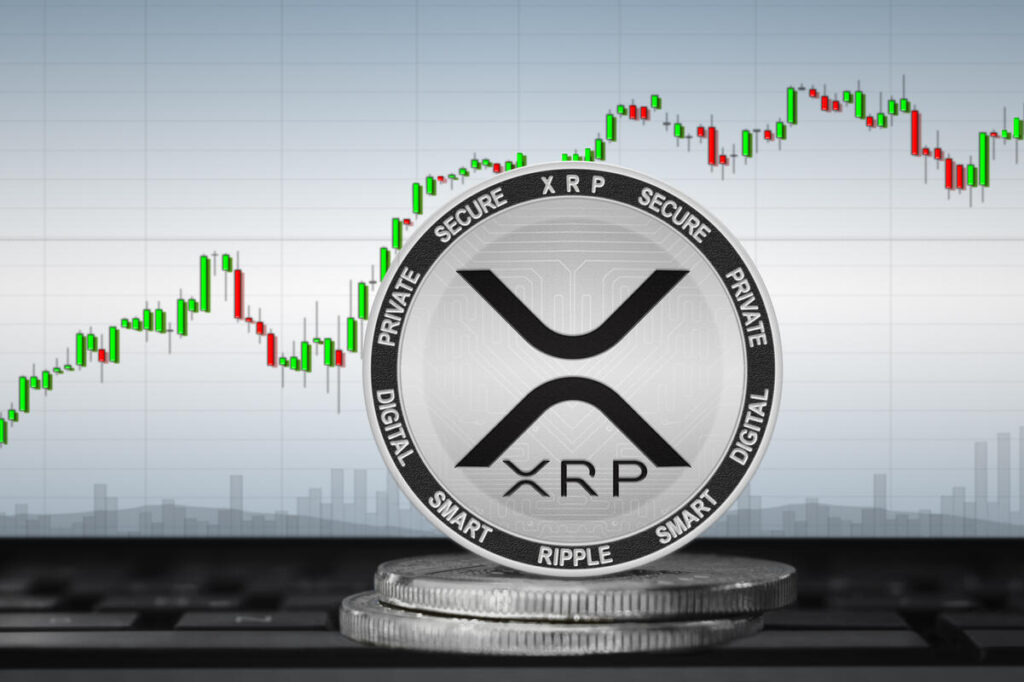Coinbase is reintroducing U.S. retail investors to regulated crypto fundraising through a new platform dedicated to primary token offerings, marking the first such opportunity since the 2018 ICO boom.
The American exchange announced it will launch the initiative later this month, aiming to restore public participation in early-stage crypto projects under strict compliance controls.
The first token to debut on the new platform will be from Monad, a blockchain protocol whose sale will run from November 17 to 22, as Bitzo reported.
Coinbase plans to host roughly one token sale per month going forward, creating a structured, recurring schedule for new digital asset launches.
A Fairer Model for Token Distribution
Each token sale will be open for one week, during which verified users can submit purchase requests.
Once the sale period ends, Coinbase’s allocation system will prioritize smaller buyers first, gradually expanding to fill larger orders.
This approach, the company said, is meant to ensure broader participation and prevent large investors from dominating the process.
Coinbase has also added a mechanism to discourage rapid speculative selling.
Users who immediately offload their tokens after launch will see their allocation potential reduced in future offerings.
The exchange described the system as a way to promote fairer distribution and reduce “dumping” behavior that has historically plagued public token sales.
Compliance and Settlement in USDC
Only verified Coinbase users will be eligible to participate, and all purchases will be settled in USDC, the dollar-backed stablecoin issued by Circle.
Token issuers listing through the platform will face a six-month lockup period, preventing project founders and affiliates from selling or transferring tokens on secondary markets without Coinbase’s prior approval and public disclosure.
This restriction aims to maintain price stability and protect investors from insider selling shortly after launch.
Participation will be free for retail buyers, but token issuers will pay a fee based on the total amount of USDC raised, along with any associated listing costs.
Renewed Access for U.S. Retail Investors
The move represents a major milestone for the U.S. crypto sector, where retail access to regulated public token offerings has been virtually nonexistent since 2018.
Coinbase’s regulated approach seeks to fill a long-standing gap between private fundraising rounds—typically reserved for venture capitalists—and the broader investing public.
By implementing compliance safeguards and transparent rules, the platform could set a precedent for how token sales are conducted in the United States going forward.
Remembering the ICO Boom and Its Collapse
Coinbase’s new offering arrives years after the spectacular rise and fall of the Initial Coin Offering (ICO) era.
ICOs emerged in 2017 as a novel method for blockchain startups to raise capital directly from the public by selling newly minted tokens.
By the first half of 2018, ICOs had raised an estimated $13.7 billion, more than double the total collected in 2017.
However, the boom quickly attracted regulatory attention.
In 2017, the U.S. Securities and Exchange Commission (SEC) signaled that some tokens could qualify as securities under the Howey test, bringing them under existing investment laws.
A 2018 report by Ernst & Young examined over 140 major ICOs and revealed that 86% of tokens were trading below their launch prices within a year, while nearly a third had lost almost all their value.
The combination of regulatory crackdowns, investor losses, and a deep crypto bear market effectively ended the ICO frenzy.
Coinbase’s Attempt to Modernize the ICO Model
By introducing transparency, compliance oversight, and anti-dumping mechanisms, Coinbase appears to be reviving the ICO model with institutional-grade safeguards.
If successful, the platform could usher in a new era of compliant token fundraising, bridging the gap between the innovation of crypto’s early days and the regulatory expectations of today’s markets.
Earlier this month, Coinbase clashed with several US banks over a key stablecoin interest rule as part of the recently passed GENIUS Act.
French crypto hardware wallet provider Ledger is exploring a potential listing in New York as demand for its devices surges due to escalating cyberattacks.
The company, founded in Paris in 2014, has reported record revenues in 2025, reaching triple-digit millions, driven by both individual and institutional demand.
CEO Pascal Gauthier told the Financial Times that this year has been the company’s strongest yet, as hackers increasingly target digital assets.
“We’re being hacked more and more every day … hacking of your bank accounts, of your crypto, and it’s not going to get better next year and the year after that,” he said.
Crypto Thefts Hit New Highs
The surge in Ledger sales coincides with a record year for crypto-related thefts.
According to Chainalysis, hackers stole $2.2 billion worth of digital assets in the first half of 2025, surpassing the total losses recorded in all of 2024.
Approximately 23% of these attacks targeted individual wallets, highlighting the growing need for secure hardware solutions.
Ledger Secures $100 Billion in Bitcoin
Gauthier revealed that Ledger currently secures around $100 billion worth of Bitcoin for its customers.
He also suggested that the company may benefit from seasonal spikes in sales during Black Friday and the Christmas period.
Looking ahead, Ledger plans to raise funds in 2026, either through a private funding round or a US listing.
The company is increasing its New York headcount, with Gauthier noting, “money is in New York today for crypto, it’s nowhere else in the world, it’s certainly not in Europe.”
Competitors such as Trezor and Tangem offer similar “cold storage” wallets, but Ledger remains the market leader.
The company was last valued at $1.5 billion in 2023, with backing from 10T Holdings and True Global Ventures.
Multisig App Upgrade Sparks Debate
Last month, Ledger launched a new multisignature (multisig) interface, receiving mixed reactions from its user base, as reported by Bitzuma.
While many praised the upgrade as a technical improvement, the new fee structure—including a $10 flat fee per transaction and a 0.05% variable fee for token transfers—drew criticism.
Developers such as pcaversaccio accused Ledger of moving away from its Cypherpunk roots, arguing the app has become a centralized “choke point” aimed at extracting revenue from users.
XRP has fallen sharply following Ripple’s annual Swell conference, erasing much of the brief rally seen during the event.
After reaching highs near $2.40 on November 5, XRP dropped over 9% to $2.19, despite several major announcements by Ripple, including a $500 million funding round led by Citadel Securities and Fortress Investment Group.
The company also unveiled new integrations for its RLUSD stablecoin and hinted at a decentralized lending protocol on the XRP Ledger (XRPL).
“Buy the Rumor, Sell the News” Trend Persists
The decline reflects a familiar pattern where XRP tends to fall after Ripple’s flagship event — a trend observed in four of the past five years.
Historically, XRP has posted negative returns between the Swell conference and year-end, as investor excitement fades following the announcements.
Technical Indicators Signal Further Downside
The broader crypto market’s pullback, including Bitcoin’s dip below $100,000, has also weighed on altcoin sentiment.
Technically, XRP’s recent price action has confirmed a bearish “flag” pattern, compounded by an impending death cross — when the 50-period exponential moving average drops below the 200-period EMA.
This setup suggests the potential for XRP to fall toward the $1.65–$1.70 range, aligning with previous support levels from April.
Bitcoin hovered around $102,000 on Thursday, as traders struggled to push the price beyond the $105,000 resistance level amid rising sell pressure.
Selling Pressure Builds Around $105,000
Data from Cointelegraph Markets Pro and TradingView showed Bitcoin’s rebound losing steam following the daily open.
Analyst Skew noted that Bitcoin’s price appeared capped by a cluster of sell orders just above $105,000, adding that this was “not surprising.”
He warned that the increase in sell-side liquidity could be a deliberate attempt to suppress prices during Asian trading hours.
Trading analytics platform Material Indicators highlighted that the significant ask liquidity had not yet caused a price correction, suggesting the seller could be trying to drive Bitcoin down toward the $98,000 to $93,000 range.
“If price hits $105k, I’d expect part if not all of those asks to get pulled,” the group said, noting that Bitcoin’s bounce from its 50-week simple moving average still carries “macro bullish implications.”
Traders Eye Potential Dip
Market commentator Exitpump described the $105,000 sell wall as “insane,” while other analysts suggested the liquidity might not be genuine.
Meanwhile, veteran investor Kyle Chasse cautioned that another short-term price drop could occur, pointing to a buildup of bid liquidity below current levels.
“Confidence could get wiped in a heartbeat,” he said, referencing CoinGlass data showing clusters of liquidations awaiting lower price zones.
External Market Factors at Play
Bitcoin’s latest movements also coincided with cooling momentum in U.S. equities, which have been retreating from all-time highs.
Speculation around the Supreme Court possibly overturning international trade tariffs added uncertainty to broader markets.
Analysts believe that if the Court strikes down the tariffs, it could trigger a rally in equities — but potentially divert short-term liquidity away from Bitcoin.
As of Thursday afternoon, Bitcoin remained volatile, trading narrowly between $101,500 and $103,500, with traders keeping a close watch on the critical $105,000 resistance zone.
Tokyo-listed Bitcoin treasury company Metaplanet has secured a $100 million loan backed by its Bitcoin holdings.
The funding, disclosed in a Tuesday filing, was borrowed on October 31 under a credit agreement that allows the company to use its Bitcoin as collateral for short-term financing, amid BTC dropping in the last week.
Metaplanet did not reveal the lender’s identity but confirmed the loan carries a benchmark US dollar rate plus a spread and can be repaid at any time.
The company described the structure as conservative, noting it holds 30,823 BTC, valued at roughly $3.5 billion as of the end of October.
Metaplanet said this position is large enough to maintain strong collateral coverage even if Bitcoin’s price declines.
Loan Proceeds to Support Bitcoin Purchases and Share Buybacks
Proceeds from the credit line may be deployed in several areas, the company said.
These include additional Bitcoin purchases, its Bitcoin income business — where holdings are used to earn option premiums — and share repurchases, depending on market conditions.
Shares in Metaplanet fell 2% following the announcement.
The move comes just days after the company unveiled a 75 billion yen ($500 million) share buyback program.
Like the recent loan, the buyback program is also backed by Bitcoin-collateralized financing.
Metaplanet said the program is designed to restore investor confidence after its market-based net asset value (mNAV) fell below 1.0.
mNAV Dip and Company’s Acquisition Plans
The mNAV, a metric comparing the company’s market value to its Bitcoin holdings, briefly dropped to 0.88 last month.
It has since rebounded to above parity, according to the company.
During the dip, Metaplanet temporarily paused new Bitcoin purchases but reiterated its commitment to acquire 210,000 BTC by 2027.
The company expects the financial impact of the $100 million drawdown on its 2025 fiscal results to be minor.
It also pledged to disclose any material changes to investors should they arise.
Market Context: Bitcoin Treasury Companies
Metaplanet’s move occurs amid wider scrutiny of Bitcoin treasury firms.
Last week, S&P Global Ratings assigned a “B-” speculative-grade rating to Michael Saylor’s Bitcoin treasury company, Strategy.
S&P cited heavy Bitcoin concentration, limited liquidity, and a narrow business focus as key weaknesses.
Critics have increasingly questioned the crypto treasury model.
A report from 10x Research noted that some Bitcoin treasury companies have seen their net asset values collapse, erasing billions in paper wealth.
Analysts argued that the boom in Bitcoin treasury firms, which issued shares at multiples of their actual Bitcoin value, has “fully round-tripped,” leaving retail investors with losses while firms accumulated real Bitcoin.
Investor Takeaways
Metaplanet’s $100 million Bitcoin-backed loan and share repurchase program reflect a broader strategy to maintain investor confidence and expand its BTC holdings.
The company’s large Bitcoin position provides a buffer against market volatility, allowing it to secure financing while continuing operations.
Investors should note, however, that Bitcoin treasury companies carry inherent risks, including high concentration in a single volatile asset and dependency on market sentiment.
The recent attention from credit rating agencies and research firms underscores the importance of monitoring liquidity, collateral coverage, and net asset value trends.







